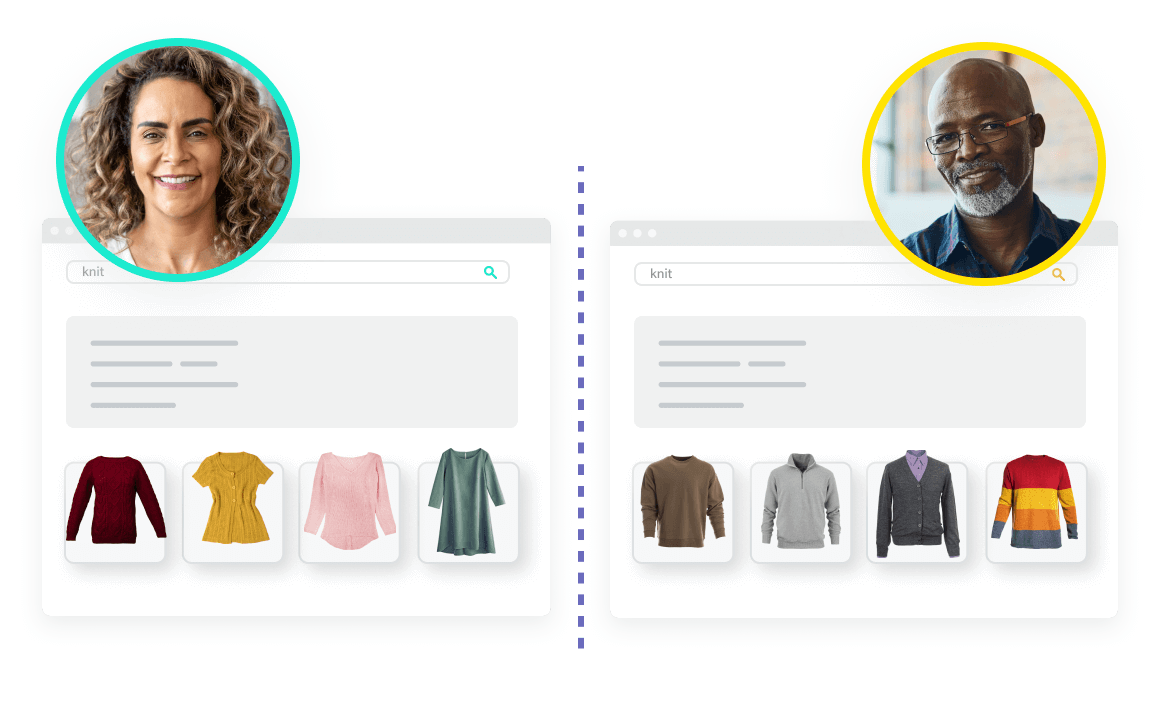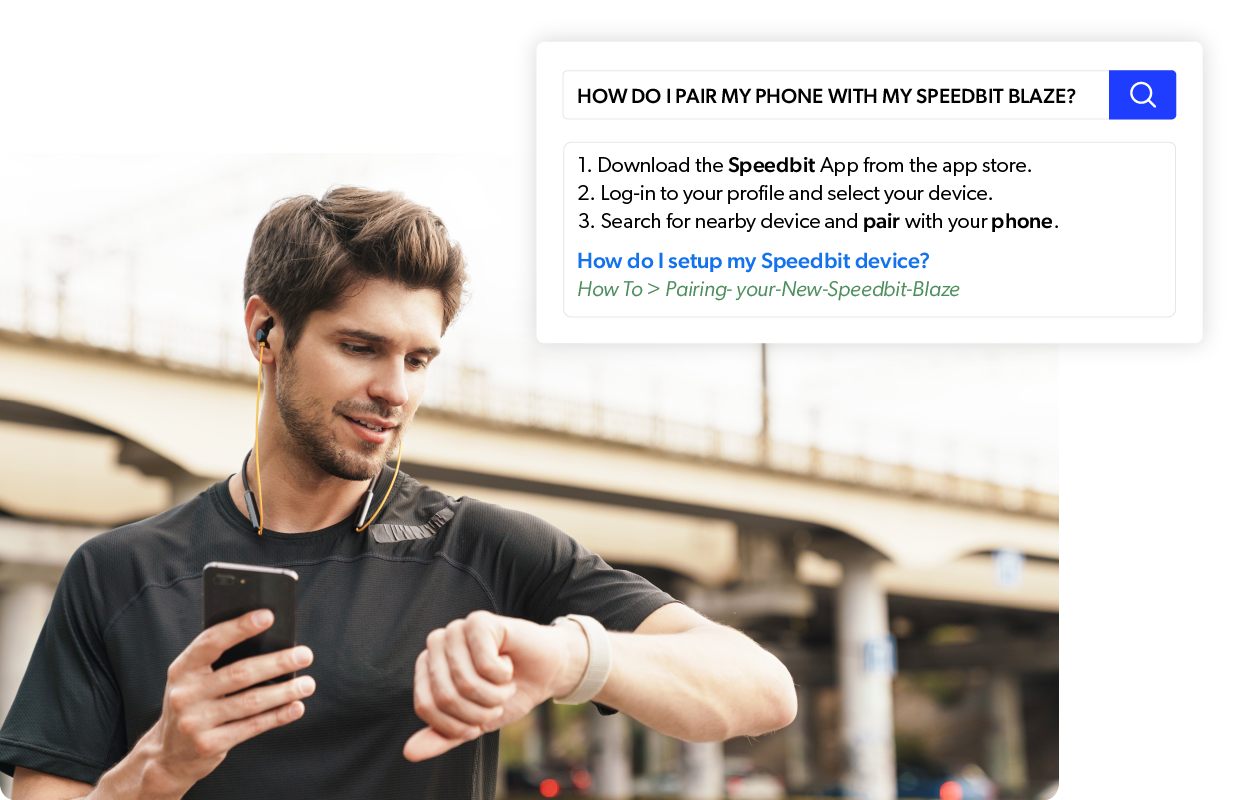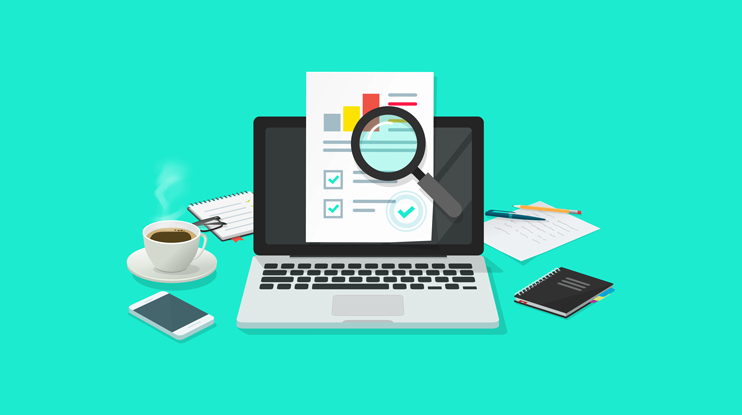Every year service leaders probe through organic search results looking for statistics to validate their customer experience initiatives of the year. Sometimes for validation, sometimes for inspiration — but the hunt for customer service statistics is always on.
Like pictures, numbers say a thousand words too. Every presentation deck has that one slide that’s filled with numbers, statistics, and other data points. After all, you can’t argue with numbers, especially when it comes to understanding customers!
If you’re preparing a deck to argue for building a better customer experience or are looking for some perspective on the current state of things, this blog has you covered. It includes customer experience statistics on an array of topics beneficial for service leaders who need data points to polish their CX initiative.
This portrait of customer experience underlines the following customer experience trends or talking points for 2024:
- Importance of customer experience
- Relationship between personalization and customer experience
- Need for a customer loyalty strategy
- Omnichannel customer experience management
- Role of AI in customer experience, including the rise of self-service and chatbots

Customer Experience vs Customer Service: What’s the Difference?
To start with, however, I’d like to make a clear distinction: Customer experience is not just customer service.
Customer service and support is one of many interactions that comprise the whole of your brand’s customer experience. These include, but certainly aren’t limited to:
- Product research
- Purchase process
- Training and onboarding
- Post-purchase customer service and support
- Renewals, cancels, and returns
“In the end, [customer support] is what happens when the experience breaks down,” says Annette Franz, Founder and CEO of CX Journey Inc. and a Certified Customer Experience Professional (CCXP). “If we get the experience right, then we take the weight off the contact center. If we get the experience wrong, customers will be calling customer service.”
As for a working definition of customer experience, Franz sums it up thusly: “customer experience is the sum of all interactions that a customer has with a brand over the life of their relationship with their brand. More importantly, the feelings, emotions, and perceptions they have about those interactions.”
This means that, even if customer service isn’t the whole of your customer experience, this doesn’t lessen its impact at all. (Which you’ll see in the following customer experience statistics!) If you’re wondering how to craft an excellent customer experience, check out our blog on the subject.
Importance of Customer Experience
Why Should You Care About Your Customer Experience?
I’m going to let the numbers do the talking here.
1. 80% of customers claim that the experience that a company provides is as important as its product and services. (Salesforce, State of the Connected Customer, 6th Edition)
2. 77% of customers expect to immediately connect with a company representative or support agent when they contact a company. (Salesforce, State of the Connected Customer, 6th Edition)
3. Only 33% of customers say companies are proactive when it comes to addressing their service needs. (Salesforce, State of the Connected Customer, 6th Edition)
4. A mere 14% of consumers think it takes little to no effort to get their cases solved. (Salesforce, State of the Connected Customer, 6th Edition)
5. 47% of consumers say they generally trust companies versus 67% of business buyers. (Salesforce, State of the Connected Customer, 6th Edition)
6. 88% of customers say that a positive customer experience increases their likelihood of repeat purchases. (Salesforce, State of the Connected Customer, 6th Edition)
7. 75% of customers recommended a brand based on excellent customer service. (Salesforce, State of the Connected Customer, 6th Edition)
8. 75% of customers forgave company mistakes provided that they are backed by excellent customer service. (Salesforce, State of the Connected Customer, 6th Edition)

Relationship Between Personalization & Customer Experience
It’s Complicated
The customer expectation around CX and the impact personalization can have on that CX is convoluted. Here’s the dichotomy: consumers want personalization but are skeptical about how their data is used. On the other hand, companies want to deliver personalization, but they can’t seem to get it right.
The statistics below shed more light on this:
9. 65% of consumers expect companies to adapt to their changing needs and preferences. (Salesforce, State of the Connected Customer, 6th Edition)
10. 61% of consumers feel that most of the companies they do business with treat them as a number. (Salesforce, State of the Connected Customer, 6th Edition)
11. 73% of consumers expect better personalization when technology advances, 74% expect it when they provide more data, and 64% expect it when they spend more. (Salesforce, State of the Connected Customer, 6th Edition)
12. While 58% of consumers believe sharing their data is a necessary tradeoff for a personalized experience, 87% want companies to ask permission before their data is collected. (CI&T)
13. 84% of shoppers say that personalization influences their purchases and 88% say they’re likely to continue shopping with a retailer that offers a personalized experience. (Elastic and Wakefield Research)
Need For a Customer Loyalty Strategy
It’s easy to understand the importance of a good customer experience to customer loyalty and customer retention. It makes logical sense.
But put on your ‘consumer hat’ for a moment.
As a consumer, with more options and better options today — just how loyal are you really to a brand? Well, you still might be but as you’ll soon find out — according to our most recent Customer Service Relevance Report, most consumers identify themselves as less brand loyal. So poor customer service, especially when its post-purchase, is just another reason for consumers to move on.
When “the times are a-changin,” you need to change too. You don’t just need a loyalty program anymore; instead you need to build a loyalty strategy.

Customer Loyalty Comes Falling Down
14. 72% of consumers have switched brands in the last year because of better deals, 55% switched for better quality and 41% switched for product availability or selection. (Salesforce, State of the Connected Customer, 6th Edition).
15. 56% of customers rarely or never complain when they have a negative experience with a brand—they just leave. This is up from 46% in 2022. (Coveo, Customer Service Relevance Report 2023)
Why Do You Need A Strategy to Retain Loyal Customers?
16. 70% of U.S. consumers view loyalty programs as a driver of brand loyalty. (Statista)
17. 85% of Gen Z customers plan to join a premium loyalty program in 2023. (Statista)
18. About 50% of consumers claim they’ve joined a loyalty program to “express devotion” to a company or brand. (Statista)
19. Loyal customers make purchases 90% more often versus non-loyal customers and spend 60% more per transaction. (Zippia)
20. 56% of customers say they’ll remain loyal to a brand that understands them. (Zippia)
21. 76% of consumers are motivated to switch brands for the promise of a better loyalty program. (Zippia)
22. Consistency earns loyalty. 79% of customers expect consistent interactions across departments and 70% expect all company reps to have access to the same information about them. (Salesforce, State of the Connected Customer, 6th Edition)
23. Multiple positive and negative emotions impact brand loyalty. Top positive emotions include consumers feeling valued, happy, and appreciated. Negative emotions are focused on frustration, disappointment, annoyance, and underappreciation. (Forrester, The US Customer Experience Index Rankings)
Essential Customer Satisfaction Steps That Marketers Are Taking:
24. 80% of U.S. business leaders say that increasing CX is a top priority—this is in the face of a second year of declining CX quality among brands. (Forrester, The US Customer Experience Index Rankings)
25. 6% of U.S. organizations have business leaders who are “customer obsessed,” up from 3% in 2022. (Forrester, The US Customer Experience Index Rankings)
26. Companies who are customer obsessed are more focused on regulatory compliance versus those who are less mature when it comes to customer obsession. (Forrester, The US Customer Experience Index Rankings)
What are Customers Looking for in Loyalty Programs?
27. On average, about consumers belong to 16.6 loyalty programs, but only use half of them. The main reason they don’t use some programs is that it takes too long (and too much effort) to receive a reward. (Statista)
28. 50% of customers say the main reason they join loyalty programs is to get rewards on everyday purchases. (Zippia)
29. 57% of customers want to save money in exchange for being loyal to a brand. To this end, rewards make it much more likely that a customer will return. (Zippia)
30. 57% of customers want greater transparency from companies when it comes to how they use AI. This increases customer trust and loyalty. (Salesforce, State of the Connected Customer, 6th Edition)
31. 72% of U.S. shoppers want to use their mobile devices when engaging with a brand’s loyalty program when they’re online shopping. (Yotpo, The State of Brand Loyalty 2022)
32. 86% of U.S. shoppers say that loyalty programs motivate them to make repeat purchases from a company or brand, with 44% saying that a loyalty program “highly influences” their decision to purchase from a brand. (Yotpo, The State of Brand Loyalty 2022)
33. 61% of U.S. consumers participate in some type of credit cards rewards program, with roughly 33% saying they prefer cash back versus rewards. (Ipsos via Chain Store Age)
Importance of Personalization to Loyalty Programs
34. 26% of executives feel that personalization is one of the main reasons that customers are loyal to their brand. (PwC Customer Loyalty Executive Survey 2023)
35. Only 22% of the customers say that easy/quick access to a brand’s products or services was important for a good personalized experience versus 47% of executives who said this was important—indicating a disconnect between what customers value versus what companies think they value. (PwC Customer Loyalty Executive Survey 2023)
36. On getting personalization right, 56% of customers say they’ll remain loyal to brands who understand them. (Stamp.me)

Omnichannel Customer Experience Management is the New Normal
You can’t have your cake and eat it too — or can you?
The pandemic disrupted businesses across industries, forcing many to adopt digital channels. Customers were forced online due to the restrictions imposed by lockdowns across the globe. In short, the pandemic accelerated digital transformation.
As businesses started delivering an omnichannel customer experience, the convenience, along with the other benefits showed customers that you can have your cake and eat it too. And, now that’s all they want.
37. 53% of customers prefer digital channels when engaging with companies. (Salesforce, State of the Connected Customer, 6th Edition)
38. Millennials lead the way when it comes to interacting with companies online, with 65% preferring to engage with brands digitally followed by 61% of Gen Z and 54% of Gen X. Only 38% of Baby boomers prefer interacting with businesses online. (Salesforce, State of the Connected Customer, 6th Edition)
39. 74% of customers now expect that anything they do in-person or over the phone can also be done digitally. (Salesforce, State of the Connected Customer, 6th Edition)
40. 71% of B2B customers prefer to use different channels during their buying journey. (Salesforce, State of the Connected Customer, 6th Edition)
41. On average, business buyers use about 10 channels when engaging with companies with email, phone, in-person, and mobile landing at the top of the list. (Salesforce, State of the Connected Customer, 6th Edition)
42. 79% of customers expect consistent interactions across all channels, with the #1 consumer frustration being disconnected experiences. (Salesforce, State of the Connected Customer, 6th Edition)
43. Nearly 75% of omnichannel shoppers primarily use retailers’ mobile apps to shop. (Digital Commerce 360 & Bizrate, 2023 Omnichannel Report)
44. In 2023, nearly 83% of the top 500 retail chains offered a buy online, pick-up in store (BOPIS) option, up from 76.3% the previous year. (Digital Commerce 360 & Bizrate, 2023 Omnichannel Report)
Role of AI in Self-Service
Like every other revolutionary technology, AI has the potential to be used for good or bad. Of course, its representation in sci-fi across cultures has accentuated its threats, creating this irrational fear of interacting with an intelligent system.
Personally, I feel like we can do with another Wall-E.
As the research below shows, the wall between man and machine is thinning. Modern advancements in AI are bringing humans and machines closer together.
Can Digital Assistants Be Our Best Friends?
45. 39% of U.S. consumers used voice assistants on their phone in the past year, with 17% performing 20+ voice tasks. (PYMNTS.com).
46. 48% of U.S. adults will use voice assistants at least monthly by 2025. (Insider Intelligence)
47. By 2024, there will be 8.4 billion voice assistants in use globally, that’s more digital assistants than there are people. (Statista)

Talk To Me, Chatbot
48. Nearly half, or 44% of shoppers, expressed interest in using chatbots to get product information before making a purchase. (PwC, June 2023 Global Consumer Insights Pulse Survey)
49. Only 4% of consumers interact with chatbots when researching products they have a high intent to buy. (PwC, June 2023 Global Consumer Insights Pulse Survey)
50. 58% of returns and cancellations are resolved by chatbots versus 17% of billing issues. (Gartner)
51. 68% of U.S. consumers surveyed by Ipsos say they’ve used customer service chatbots. (Ipsos via Chain Store Age)
52. 77% of U.S. consumers in the Ipsos survey said they prefer speaking with a human when it comes to addressing a customer service issue. (Ipsos via Chain Store Age)
53. 72% of chatbot interactions were likely or very likely to directly influence a customer to repurchase from a brand. (Simplr, 2023 State of e-commerce Customer Service via Chain Store Age)
54. 68% of customers say they wouldn’t use a company’s chatbot again after a bad experience. The percentage is highest for Baby Boomers and lowest for Gen Z (72% versus 64%). (Salesforce, State of the Connected Customer, 6th Edition)
55. 79% of respondents say they are comfortable using generative AI for customer support or service-related inquiries. (Coveo GenAI Report 2023)

I Can Help Myself When I’m Not With You: DIY Customer Service
56. 72% of customers say they’ve used self-service portals while 55% say they’ve used chatbots for DIY service. (Salesforce, State of the Connected Customer, 6th Edition)
57. 55% of customers rarely, almost never, or never complain about a bad experience—they’ll just leave, though Gen Z is more likely to use self-service again even if they have a poor experience. (Coveo, Customer Service Relevance Report 2023)
58. 50% of consumers say they prefer no self-service option versus having a bad self-service experience. (Coveo, Customer Service Relevance Report 2023)
59. 49% of Gen Z respondents said the top reason they abandon a brand is because it’s too hard to talk to an actual person, with 43% saying conflicting information from reps is also a problem. (Coveo, Customer Service Relevance Report 2023)
60. 40% of Gen Z respondents say that not being able to find information on their own is a major reason they abandon a brand. (Coveo, Customer Service Relevance Report 2023)
Bonus Stats: Low-Code, High Impact
61. 750 million new apps will need to be built by 2025, placing a huge burden on IT departments who have limited resources and a shortage of technical specialists. (Microsoft)
62. 89% of CIOs and IT professionals surveyed by Microsoft said that low-code helps improve efficiency while also being an effective solution. (Microsoft)
63. 87% of CIOs and IT professionals say low code solutions help their companies when it comes to modernizing legacy applications and systems. (Microsoft)
64. 45% of IT leaders say they’ve adopted low-code solutions to solve the problem of staff shortages. (Microsoft)
How Do You Rate Your Customer Experience?
As you can see, there’s a lot that goes into a well-rounded, thoughtful customer experience. Customer acquisition isn’t enough; and fighting back the tide of customer churn is an ongoing effort that can pay dividends if done right.
One solution is search. After all, where’s the first place you go when you want to solve a problem? Google. Instead of letting someone on YouTube or another channel explain how to fix or resolve the issue your customers are having, create a positive experience within your channels with AI-powered self-service.
With low-code offerings and features designed to connect customers to information effortlessly, Coveo can help you craft a great customer experience and grow your business.



